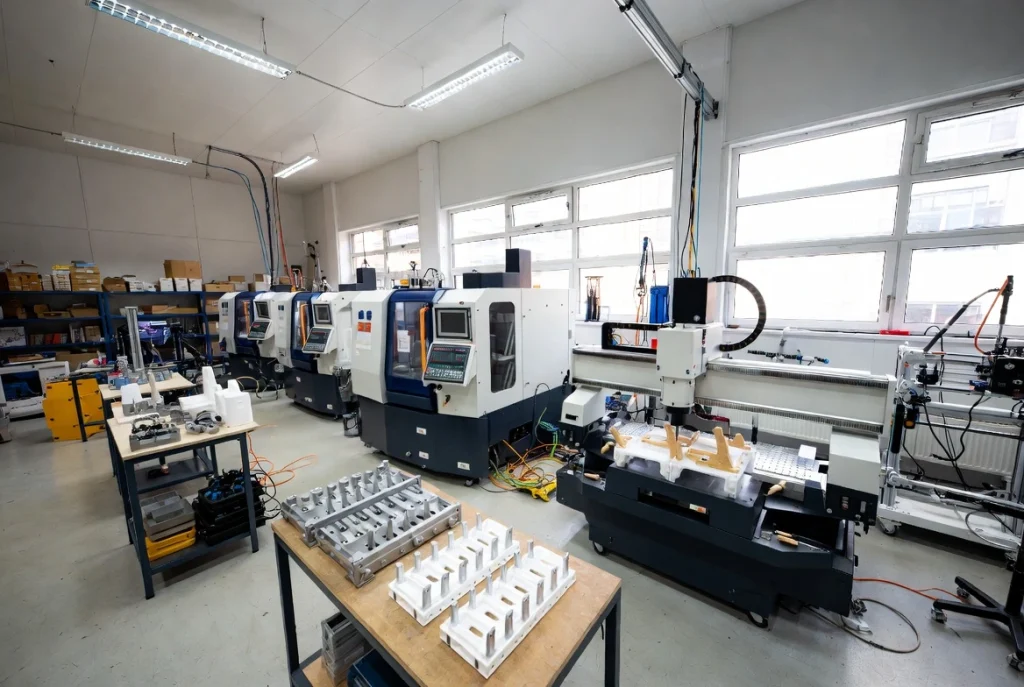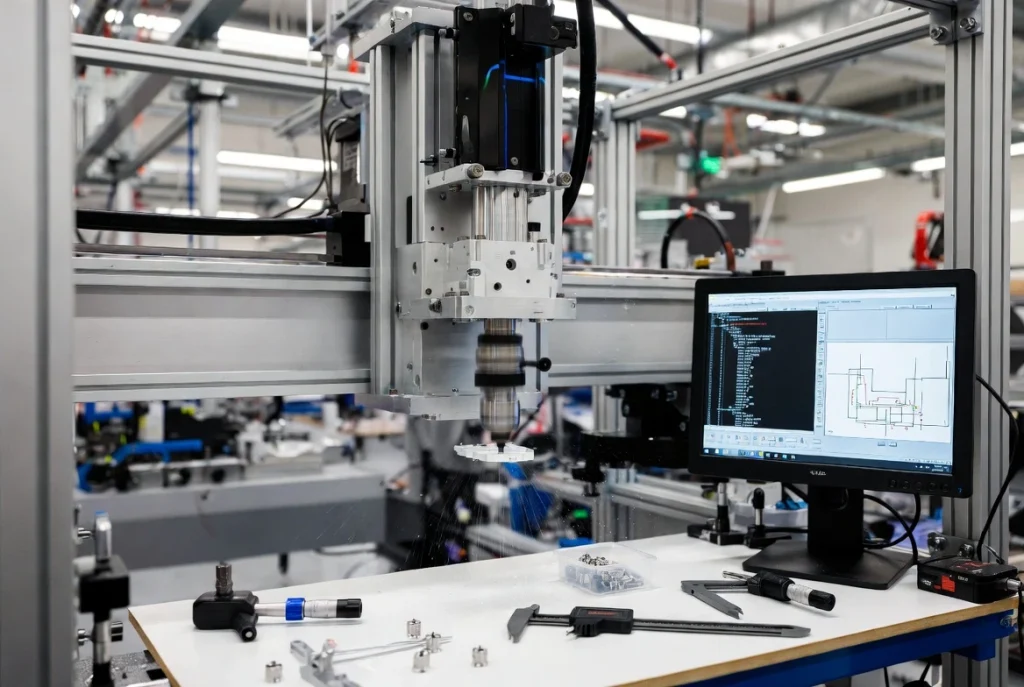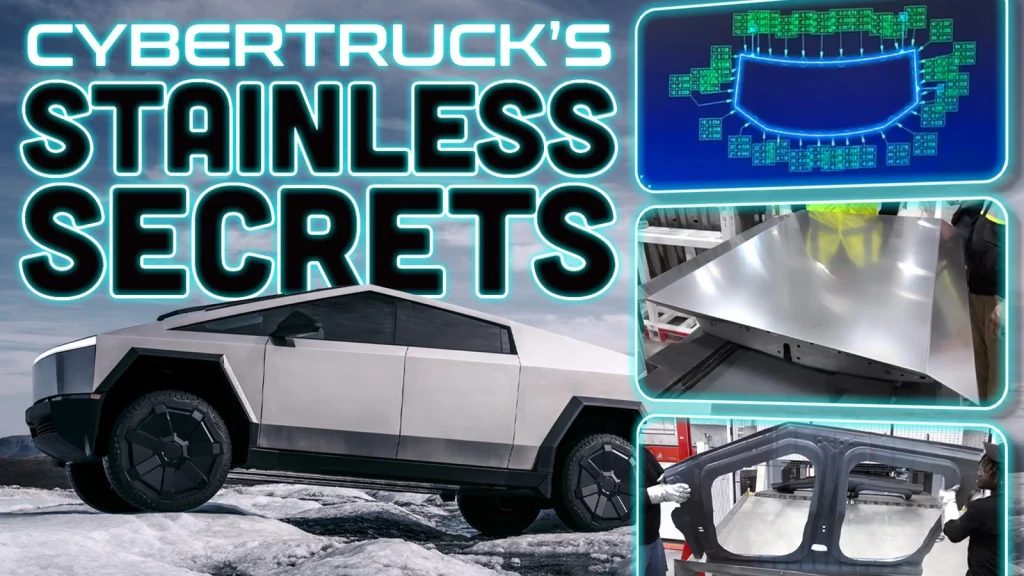In today’s hyper-competitive manufacturing landscape, CNC rapid prototyping has become the backbone of hardware innovation. Two global giants—Apple and Tesla—stand out for their unmatched approach to precision, speed, and engineering excellence.
While Apple pushes aesthetic refinement to the extreme, Tesla focuses on mechanical performance and industrial scale. But which brand truly leads in CNC rapid prototyping?
This article compares their processes, technologies, and technical data to uncover the real winner.
 What Is CNC Rapid Prototyping?
What Is CNC Rapid Prototyping?
CNC rapid prototyping uses computer-controlled machining to quickly produce functional parts with high precision. Unlike 3D printing, CNC maintains tight tolerances, supports high-strength materials, and is suitable for both prototype and production-grade components.
Key CNC Performance Parameters
| Parameter | Typical CNC Range | Impact on Development |
|---|---|---|
| Tolerance | ±0.005–0.02 mm | Ensures exact part fitting and assembly |
| Surface Finish | Ra 0.8–1.6 μm | Determines visual appeal and tactile feel |
| Machining Speed | 6,000–12,000 RPM | Balances accuracy with production speed |
| Prototype Turnaround | 1–3 days | Supports rapid design validation |
These metrics define how effectively a brand can iterate and bring concepts into real-world form.
 Apple CNC Strategy: Aesthetic Perfection at Micron-Level Precision
Apple CNC Strategy: Aesthetic Perfection at Micron-Level Precision
Apple has redefined industrial design by pairing minimalist aesthetics with impeccable machining quality. Most of Apple iconic products—MacBooks, iPhones, Apple Watches—are shaped from solid aluminum billets using multi-axis CNC milling.
Key Features of Apple CNC Process
-
Unibody machining from 6063-T6 or 7075 aluminum
-
Integrated polishing, bead blasting, and anodizing
-
Ultra-tight tolerances ensuring perfect alignment
-
Multiple prototype iterations before mass production
-
Milling optimized for flawless edges and curved surfaces
Apple CNC Performance Data
| Specification | Apple Typical Value |
|---|---|
| Machining Tolerance | ±0.005 mm |
| Aluminum Grade | 6063-T6, 7075 |
| Surface Roughness | Ra 0.6–0.8 μm |
| Prototype Cycle Time | 24–48 hours |
Apple leads the world in precision-focused CNC machining, prioritizing feel, finish, and design integrity over structural complexity.
 Tesla CNC Strategy: Industrial Strength & Functional Engineering
Tesla CNC Strategy: Industrial Strength & Functional Engineering
Tesla CNC philosophy is shaped by its mission: build durable, efficient EVs at scale. Unlike Apple smaller consumer electronics, Tesla works with large-format automotive components, requiring powerful machining centers and high-strength materials.
Tesla CNC Applications
-
Gigacasting molds for Model Y & Cybertruck
-
Suspension arms and drive components
-
Battery housing and thermal system frames
-
Powertrain prototypes for motors and inverters
Tesla is known for using large CNC machines capable of machining surfaces over 4 meters long.
Tesla CNC Performance Data
| Specification | Tesla Typical Value |
|---|---|
| Material | 7075 & A356 Aluminum |
| Machine Bed Size | Up to 4m x 2m |
| Tolerance | ±0.02 mm |
| Prototype Cycle Time | 48–72 hours |
Tesla excels in strength-focused CNC machining, prioritizing durability and mechanical performance over surface finish.
Apple vs Tesla: Side-by-Side CNC Comparison
| Feature | Apple | Tesla |
|---|---|---|
| Core Focus | Precision aesthetics | Structural engineering |
| Main Materials | 6063 & 7075 Aluminum | 7075 & A356 Aluminum |
| Typical Tolerance | ±0.005 mm | ±0.02 mm |
| Surface Quality | ★★★★★ | ★★★☆☆ |
| Prototype Speed | 24–48 hours | 48–72 hours |
| Part Size | Small electronics | Large automotive |
| Innovation Priority | Feel & finish | Strength & longevity |
Conclusion:
-
Apple dominates precision, surface finish, and small-format prototyping.
-
Tesla leads large-scale, high-strength engineering prototyping.
There is no absolute winner—only different strengths.
Cost & Scalability of CNC Prototyping: Apple vs Tesla
Typical Prototype Costs
| Brand | Prototype Type | Estimated Cost |
|---|---|---|
| Apple | Enclosures / structural shells | $500–$1,200 per part |
| Tesla | Automotive structural parts | $2,000–$10,000 per part |
Apple focuses on micro-detail perfection.
Tesla prioritizes engineering-grade durability and tooling optimization.
CNC Future Trends: What Apple & Tesla Are Adopting Next
-
Hybrid CNC + additive manufacturing for lightweight structures
-
AI-driven CAM optimization to reduce machining time
-
High-recycled aluminum for sustainability
-
Digital twin simulation for faster prototyping cycles
Both brands continue to push CNC innovation forward—but in different directions.
Final Verdict: Who Leads CNC Rapid Prototyping?
Apple leads in:
-
Precision
-
Aesthetics
-
Ultra-tight tolerances
-
Premium-grade CNC machining
Tesla leads in:
-
Strength
-
Large-format machining
-
Automotive-scale prototyping
-
Structural innovation
Both brands master CNC prototyping—just in different arenas.
Apple is the champion of perfection; Tesla is the leader of engineering strength.
For startups or manufacturers seeking Apple- or Tesla-level quality, on-demand machining services like Boona Prototypes offer scalable CNC solutions with 3-day delivery, no MOQ, and full material support.
FAQs
What is CNC rapid prototyping and why do Apple and Tesla rely on it?
CNC rapid prototyping uses high-precision machining to turn digital designs into physical parts.
-
Apple uses it for consumer-device enclosures, buttons, frames, and internal structural components.
-
Tesla uses it for EV structural parts, battery components, housings, brackets, and motor hardware.
It allows both brands to test form, fit, and performance quickly before mass manufacturing.
Which company achieves tighter machining tolerances—Apple or Tesla?
Apple wins in ultra-tight tolerances, especially for small aesthetic parts.
-
Apple typical tolerance: ±0.005–0.01 mm
-
Tesla typical tolerance: ±0.02–0.05 mm (for large structural parts)
Consumer electronics require micron-level detail, while Tesla focuses on strength and durability over microscopic precision.
What materials do Apple and Tesla use for CNC prototypes?
Apple:
-
6063-T6 aluminum
-
7075 aerospace-grade aluminum
-
Stainless steel (Watch)
-
Precision plastics for internal frames
Tesla:
-
6061-T6 & 7075 aluminum for motor housings
-
High-strength steel
-
Titanium brackets
-
Copper components for battery modules
Who has faster prototype turnaround—Apple or Tesla?
Both are fast, but for different reasons:
-
Apple: 1–3 days for high-precision cosmetic prototypes
-
Tesla: 3–7 days for large EV structural components
Tesla parts are much larger, requiring different machining setups and testing.
Does Apple or Tesla use more advanced CNC machine types?
Both use multi-axis machines, but:
-
Apple invests heavily in 5-axis micro-machining for small features.
-
Tesla uses large-format 5-axis gantry CNCs for EV chassis and motor components.
How do Apple and Tesla control quality during CNC prototyping?
Apple:
-
CMM (Coordinate Measuring Machine) scanning
-
Laser surface deviation mapping
-
Cosmetic inspection under 5–10× magnification
Tesla:
-
Stress testing
-
Fatigue load simulation
-
Dimensional inspection for large assemblies
-
Thermal behavior evaluation for EV components
Which company spends more on CNC prototyping per part?
Generally Tesla, due to scale and size.
-
Apple prototypes: $200–$1,200 per part
-
Tesla prototypes: $2,000–$10,000+ depending on structure size
Is CNC machining still essential for Apple and Tesla despite 3D printing?
Yes.
-
Apple: CNC provides the surface finish required for final consumer devices.
-
Tesla: CNC delivers structural accuracy and metal strength that 3D printing cannot fully replace.
Both often combine CNC + additive manufacturing for hybrid workflows.
Which company is more cost-efficient in CNC prototyping?
Apple tends to be more cost-efficient because:
-
Smaller parts
-
Shorter machining times
-
Higher prototype volume with optimized workflows
Tesla prototypes require more raw material, setup time, and machining hours.
Overall, who “masters” CNC rapid prototyping?
It depends on the criteria:
-
Precision & aesthetic detail: Apple
-
Strength & large-scale engineering: Tesla
-
Fast iteration & product miniaturization: Apple
-
Durability testing & functional prototyping: Tesla
Both are world leaders—but in different domains.




